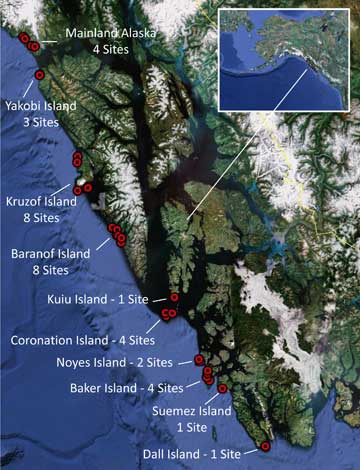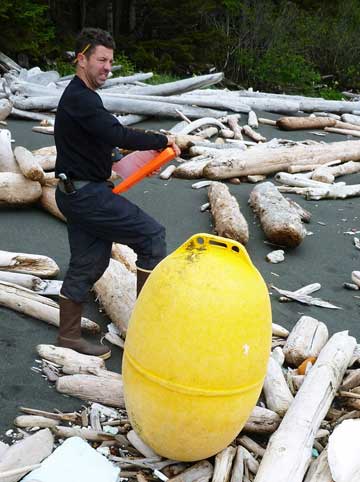
NOAA scientists complete first phase
June 29, 2012
Alaska marine debris surveys, which have been regularly conducted and funded by NOAA for the past four decades, are a small part of NOAA’s larger efforts in working with the Pacific coast states to set up monitoring stations and prepare and plan for the arrival of tsunami debris. This NOAA-led survey of marine debris focused on Southeast Alaska. The science team departed from Ketchikan, AK, June 15 aboard a 75-foot charter vessel. Over the next ten days, they recorded debris at 36 sites on 9 different islands. The most prevalent debris found was Styrofoam fragments larger than softball size (smaller size pieces are essentially innumerable) and plastic, single use water bottles. Although this was a regularly scheduled marine debris survey, it was expanded to include analysis aimed at to determining if the marine debris arriving here is associated with the Japan’s March 2011 tsunami. Scientists say at this time they cannot confirm the presence of Japan tsunami debris on Southeast Alaska beaches. “NOAA Fisheries has been doing marine debris monitoring along Alaska’s shores periodically for about 40-years, so we have a good baseline of data for comparison,” said Jacek Maselko, Auke Bay Lab scientist and chief lead scientist for the survey. “We have seen marine debris from Japan and other Asian countries over the years, so the trick is determining whether a particular item of debris is, in fact, from the Japan tsunami, or just typical marine debris.” Maselko said so far the amount of marine debris on Southeast Alaska shores has not been unusual, but the composition has changed. In recent months, many large black oval floats have been reported to NOAA by residents of Washington, Oregon and Alaska. The science team found 27 of these large black oval buoys on 11 of the 36 sites. “Fishing related debris, including buoys of various sizes and shapes are very common on the Alaskan shoreline, but this type of buoy has not been observed in any of the prior NOAA surveys,” said Maselko. Although no debris found was confirmed as coming from the Japan tsunami, the team did collect a volleyball with a handwritten name on it. NOAA is working with representatives from the Government of Japan to determine if the ball is associated with the tsunami. This was the first and southernmost of a series of regularly scheduled surveys which are designed to examine select areas throughout the Pacific Gulf coast of Alaska. Subsequent surveys will continue through the summer. “We are very interested in what we will find as our surveys continue north and west along Alaska’s coast this year,” added Maselko. “We will be monitoring specific beaches periodically to see what might show up and comparing it to baseline data to note any significant changes." NOAA’s Marine Debris Program provided funding for the survey, which wrapped up June 24 in Juneau. The NOAA Marine Debris Program asks that members of the public visit their website on the Japanese tsunami marine debris to learn about procedures when they encounter marine debris. If one finds tsunami debris, NOAA asks that it be reported to: DisasterDebris@noaa.gov. NOAA Fisheries’ Auke Bay Lab’s Jacek Maselko, the chief scientist for the survey, led the team that also included Mark Hoover from Auke Bay Lab, Jason Rolfe acting Deputy Chief of the NOAA Marine Debris Program, NOAA contractor Marty Myers from Juneau and University of Alaska student Derek Chamberlin.
On the Web:
Source of News:
E-mail your news &
photos to editor@sitnews.us
|
|||

